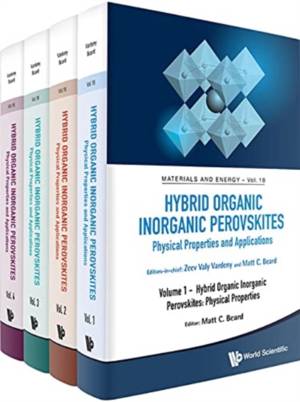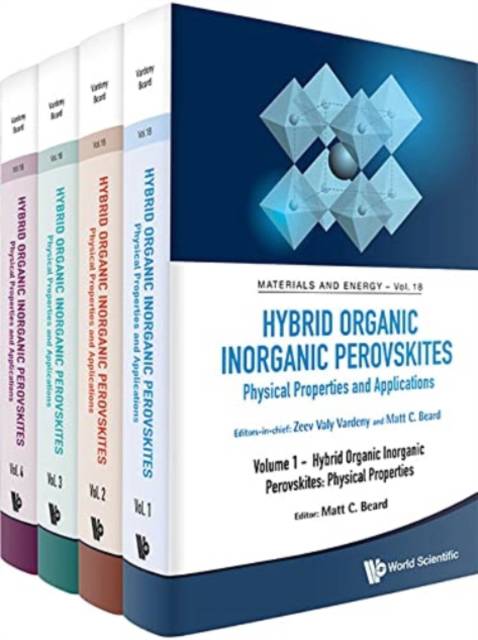
- Afhalen na 1 uur in een winkel met voorraad
- Gratis thuislevering in België vanaf € 30
- Ruim aanbod met 7 miljoen producten
- Afhalen na 1 uur in een winkel met voorraad
- Gratis thuislevering in België vanaf € 30
- Ruim aanbod met 7 miljoen producten
Zoeken
Hybrid Organic Inorganic Perovskites: Physical Properties and Applications (in 4 Volumes)
€ 1.395,45
+ 2790 punten
Omschrijving
This four-volume handbook gives a state-of-the-art overview of hybrid organic inorganic perovskites, both two dimensional (2D) and three dimensional (3D), from synthesis and characterization and simulation to optoelectronic devices (such as solar cells and light emitting diodes), spintronics devices and catalysis application. The editors, coming from academia and national laboratory, are known for their didactic skills as well as their technical expertise. Coordinating the efforts of 30 expert authors in 21 chapters, they construct the story of hybrid perovskite structural and optical properties, electronic and spintronic response, laser action, and catalysis from varied viewpoints: materials science, chemical engineering, and energy engineering. The four volumes are arranged according to the focus material properties. Volume 1 is focused on the material physical properties including structure, deposition characteristic and the structure of the electronic bands and excitons of these compounds. Volume 2 covers the hybrid perovskite optical properties including the ultrafast optical response, photoluminescence and laser action. Volume 3 contains the spin response of these compounds including application such as spin valves, photogalvanic effect, and magnetic response of light emitting diodes and solar cell devices. Finally, and highly relevant to tomorrow's energy challenges, volume 4 is focused on the physics and device properties of the most relevant applications of the hybrid perovskites, namely photovoltaic solar cells. The text contains many high-quality colorful illustrations and examples, as well as thousands of up-to-date references to peer-reviewed articles, reports and websites for further reading. This comprehensive and well-written handbook is a must-have reference for universities, research groups and companies working with the hybrid organic inorganic perovskites.
Specificaties
Betrokkenen
- Uitgeverij:
Inhoud
- Aantal bladzijden:
- 860
- Taal:
- Engels
- Reeks:
Eigenschappen
- Productcode (EAN):
- 9789811240980
- Verschijningsdatum:
- 14/03/2022
- Uitvoering:
- Hardcover
- Formaat:
- Genaaid
- Afmetingen:
- 244 mm x 163 mm
- Gewicht:
- 2076 g

Alleen bij Standaard Boekhandel
+ 2790 punten op je klantenkaart van Standaard Boekhandel
Beoordelingen
We publiceren alleen reviews die voldoen aan de voorwaarden voor reviews. Bekijk onze voorwaarden voor reviews.







